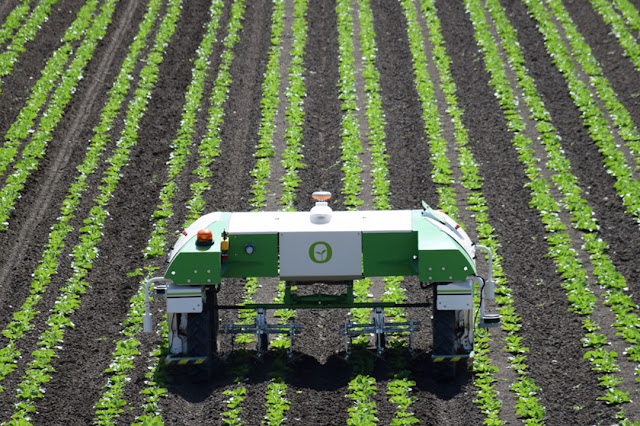The Enduring Legacy and Global Impact of Sanger Sequencing
 |
| Sanger Sequencing |
The "chain termination method," or Sanger sequencing, was created in 1977 by Frederick Sanger, an English biochemist, and his associates. This technique is intended to ascertain the nucleotide base sequence of a fragment of DNA, typically less than 1,000 bp in length. The "gold standard" for verifying DNA sequences, including those sequenced via next-generation sequencing (NGS), is Sanger sequencing with 99.99% base accuracy. The Human Genome Project used Sanger sequencing to identify the sequences of comparatively tiny human DNA pieces.
Global Sanger Sequencing: Past, Present, and Future
Sanger sequencing, a method developed by Frederick Sanger in
1977, has been a cornerstone in the field of genomics for over four decades.
Despite the advent of next-generation sequencing (NGS) technologies, Sanger
Sequencing continues to be a critical tool for genetic research and
diagnostics due to its high accuracy, simplicity, and reliability. This article
explores the historical significance, current applications, and future
prospects of Sanger sequencing on a global scale.
The Foundation
of Sanger Sequencing
Sanger sequencing, also known as chain-termination
sequencing, revolutionized the field of genetics by allowing scientists to read
the exact sequence of nucleotides in a strand of DNA. The method involves
synthesizing DNA strands from a single-stranded template, incorporating
chain-terminating nucleotides that stop synthesis at specific points. These
fragments are then separated by size using capillary electrophoresis, allowing
the sequence to be determined.
The simplicity and precision of this method made it the gold
standard for DNA sequencing and played a pivotal role in major scientific
milestones, such as the Human Genome Project. Even today, Sanger sequencing is
widely used for smaller-scale projects, validation of NGS results, and specific
applications that require high accuracy.
Key
Applications of Sanger Sequencing
Sanger sequencing is utilized across various scientific and
medical fields, demonstrating its versatility and continued relevance:
Clinical
Diagnostics: Sanger sequencing is indispensable in clinical diagnostics
for identifying genetic mutations associated with diseases such as cancer,
cystic fibrosis, and other inherited conditions. Its high accuracy makes it the
preferred method for confirming mutations detected by other techniques.
Genetic
Research: Researchers use Sanger sequencing for gene discovery,
mutation detection, and studying genetic variations. It remains a valuable tool
for projects requiring precise sequencing of specific genes or regions of
interest.
Forensic
Science: In forensic science, Sanger sequencing helps analyze DNA
samples from crime scenes, aiding in the identification of suspects and
exoneration of the innocent. Its ability to generate clear, interpretable data
is crucial in legal contexts.
Microbial
Genomics: The method is employed to sequence genomes of bacteria,
viruses, and other microorganisms, essential for understanding pathogen
evolution, tracking outbreaks, and developing new treatments.
Agricultural
Biotechnology: Sanger sequencing is used to study the genetics of plants
and animals, aiding in the development of genetically modified organisms (GMOs)
and improving crop yields and disease resistance.
Global
Trends Influencing Sanger Sequencing
Several global trends are shaping the use and development of
Sanger sequencing:
Technological
Advancements: Continuous improvements in sequencing technology and
instrumentation are enhancing the efficiency and cost-effectiveness of Sanger
sequencing. Innovations such as automated sequencers and improved reagents are
making the technique more accessible and reliable.
Increased
Demand for Genetic Testing: Growing awareness and demand for genetic testing in
personalized medicine, prenatal screening, and disease diagnostics are driving
the adoption of Sanger sequencing. Its role in providing accurate and
definitive results is critical for these applications.
Integration
with NGS: Sanger sequencing is increasingly used alongside NGS
technologies. While NGS is ideal for large-scale genomic studies, Sanger
sequencing is often employed to validate NGS findings, ensuring accuracy and
reliability.
Expansion
in Emerging Markets: Emerging economies are investing in genomic research
and healthcare infrastructure, leading to increased utilization of sequencing
technologies. This expansion is making Sanger sequencing more accessible in
regions previously limited by technological and financial constraints.
Regulatory
Approvals: The regulatory landscape is evolving to support the use of
genetic testing and sequencing technologies. Clear guidelines and approvals
from regulatory bodies facilitate the integration of Sanger sequencing into clinical
practice.
Challenges
and Future Prospects
Despite its many advantages, Sanger sequencing faces certain
challenges:
Competition
from NGS: The rapid advancement of NGS technologies poses a challenge
to Sanger sequencing. NGS offers higher throughput and lower cost per base,
making it more suitable for large-scale projects. However, Sanger sequencing's
accuracy and simplicity ensure its continued relevance for specific
applications.
Cost and
Accessibility: Although costs have decreased, Sanger sequencing can still
be expensive for large-scale applications. Efforts to further reduce costs and
improve accessibility, especially in low-resource settings, are essential for
broader adoption.
Technical
Expertise: The technique requires specialized knowledge and skills for
optimal use. Training and education programs are crucial to ensure that
researchers and clinicians can effectively utilize Sanger sequencing.
The future of Sanger sequencing appears promising. Ongoing
technological advancements, integration with NGS, and expanding applications in
various fields will continue to drive its use. As the demand for accurate and
reliable genetic data grows, Sanger sequencing will remain a vital tool in
genomics, contributing to scientific discoveries, medical advancements, and
improved public health outcomes globally.
While newer technologies may dominate the headlines, the
enduring value of Sanger sequencing in providing precise, reliable, and
interpretable genetic data ensures its place in the future of genetic research
and diagnostics. Its global impact and potential for continued innovation
underscore its significance in the ever-evolving landscape of genomics.
Get more insights on Sanger
Sequencing



Comments
Post a Comment